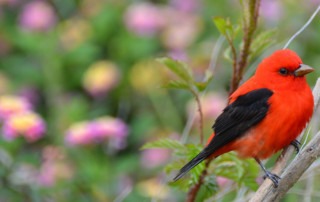 Found along the natural ridges of relic distributaries (bayous) and on cheniers (live oak forests) are the coastal upland forests of Barataria-Terrebonne. These upland forest account for a very small percentage of landmass in the Mississippi deltaic plain but are extremely important for Neotropical migrants especially during spring. This is particularly true of cheniers.
Found along the natural ridges of relic distributaries (bayous) and on cheniers (live oak forests) are the coastal upland forests of Barataria-Terrebonne. These upland forest account for a very small percentage of landmass in the Mississippi deltaic plain but are extremely important for Neotropical migrants especially during spring. This is particularly true of cheniers.
Historically, cheniers (coastal live oak forest) dominated many of the barrier islands that once existed. Today, many of Barataria-Terrebonne’s barrier islands are small remnants of what once was. All islands, with the exception of Grand Isle are now too small to support forested habitats or people.
The natural high ground along many of Louisiana’s bayous and rivers were inhabited long ago as they represented the highest ground available. This “highest ground” was the last place to flood during periods of high rainfall and strong southerly winds. As a result, many of the natural forests that once existed here have been converted to agricultural and residential areas.
Cheniers and upland forests are of particular importance to migratory songbirds just before they begin their southward journey across the gulf during fall and in the spring when they return. These habitats are important to many birds including Swainson’s thrushes, yellow-throated vireos, scarlet tanagers, painted buntings, rose-breasted grosbeaks, Baltimore orioles, Tennessee, cerulean, Blackburnian, Kentucky, Wilson’s, and black-throated green warblers, and many others.
















